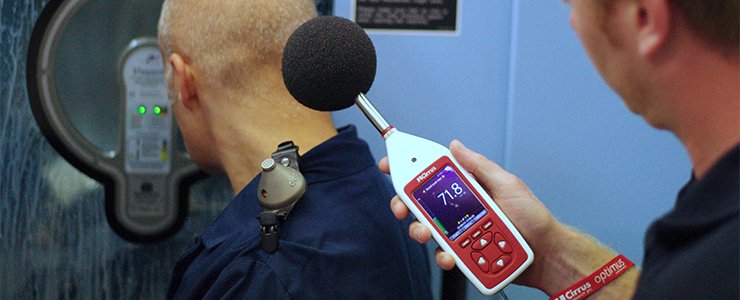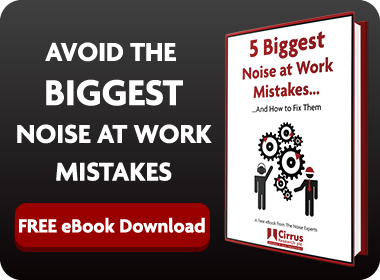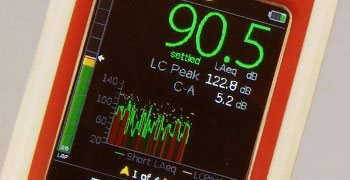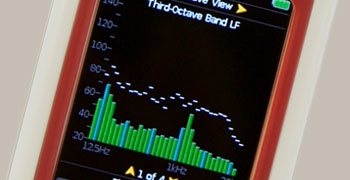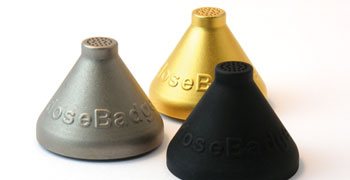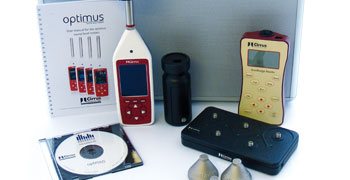Noise at Work? We've Got You Covered
Everything You Need to Meet the Noise At Work Regulations
Occupational noise is one of the most overlooked risks in the workplace. Ignoring this hazard can result in fines or prosecution from the Health & Safety Executive. You are also open to action from Personal Injury Lawyers seeking compensation for Industrial Deafness Claims.
Why? Exposure to excessive noise levels can cause noise-induced hearing loss or tinnitus. Hearing damage is irreversible, so it is vital to ensure you are protecting your employees and your business.
How to Protect Your Business
You must carry out regular Noise Risk Assessments and take action to reduce excessive noise exposure.
Cirrus Research is here to help you every step of the way, from choosing the right sound level meter or noise dosimeter to providing ongoing UK training and support. All of our noise measurement equipment complies with the Noise At Work Regulations, ensuring you are taking accurate measurements.
Tell us what you need today and our Noise Experts will be ready to help.
TELL US WHAT YOU NEED
Getting Started: Choose Our Recommended Instruments for Noise At Work
Frequently Asked Questions
The statement from the 2005 Control of Noise at Work Regulations is:
What does this mean?
Your Sound Level Meter or Noise Dosimeter should able to measure and display:
- The equivalent continuous A-weighted sound pressure level in decibels that represents the sound the person is exposed to during the working day
- This is commonly known as the Leq and may be shown as LAeq or LAeq,t
- The duration over which the Leq is measured
You should also measure the maximum C-weighted peak sound pressure level:
- This will usually be displayed on your sound level meter as Peak(C) dB or LCPeak
- In accordance with the regulations, this should always be measured with C-weighting
With these two measurements for each different activity to be assessed, you can calculate the LEP,d and where required the LEP,w values.
If you will need to provide PPE or hearing protection, you may also need to record additional values such as the C-weighted Leq (LCeq) or the Leq of the noise in Octave Bands.
This information can be used to assess the effectiveness of hearing protection. The optimus red sound level meters can provide these functions in addition to the LAeq and C-weighted peak values.
Here's the actual text from the Directive:
Noise at Work Directive 2003/10/EC
Noise at Work Directive 2003/10/EC is officially known as the "Directive 2003/10/EC of the European Parliament and of the Council of 6 February 2003 on the minimum health and safety requirements regarding the exposure of workers to the risks arising from physical agents (noise)".
In the directive, the following limit and action values are defined:
- (a) exposure limit values: LEX,8h = 87 dB(A) and LCpeak = 200 Pa respectively;
- (b) upper exposure action values: LEX,8h = 85 dB(A) and LCpeak = 140 Pa respectively;
- (c) lower exposure action values: LEX,8h = 80 dB(A) and LCpeak = 112 Pa respectively.
Where:
The daily noise exposure level (LEX,8h) is the average noise exposure level for a nominal 8-hour working day as defined by ISO 1999
The peak sound pressure (LCpeak) is the maximum value of the 'C'-frequency weighted instantaneous noise pressure.
The Member States are to comply with this Directive before 15 February 2006. However, there may have an additional period of five years from 15 February 2006 with regard to limit values for personnel on board seagoing vessels. And, for the music and entertainment sectors.
Member States have a maximum transitional period of two years from 15 February 2006 (i.e. five years in total) to comply with this Directive, provided that, in the meantime, the levels of protection already achieved are maintained.
The instrument that is ideal for you depends upon which regulations or standards you need to comply with. Here are some suggestions for the main Occupational Noise Regulations.
Guidance on the regulations is published in the Controlling Noise at Work booklet and this states that:
You can also use a Class 1 or Type 1 sound level meter that meets these standards but you should never use a meter that does not meet these standards to at least Type 2 as it will not meet the requirements laid down by the HSE.
Your sound level meter should be capable of measuring:
- A weighted Leq (LAeq or LAeq,t)
- C weighted maximum C-weighted peak sound pressure (LCPeak)
You should also have a suitable acoustic calibrator to check the sound level meter before and after making any measurements.
More Information
Find out more
If you have any questions or if you would like any more information, please contact us and we will be pleased to help.
From the UK, contact us on 01723 891655.
From outside the UK, please contact us on +44 1723 891655.
You can also contact us via our contact form.

